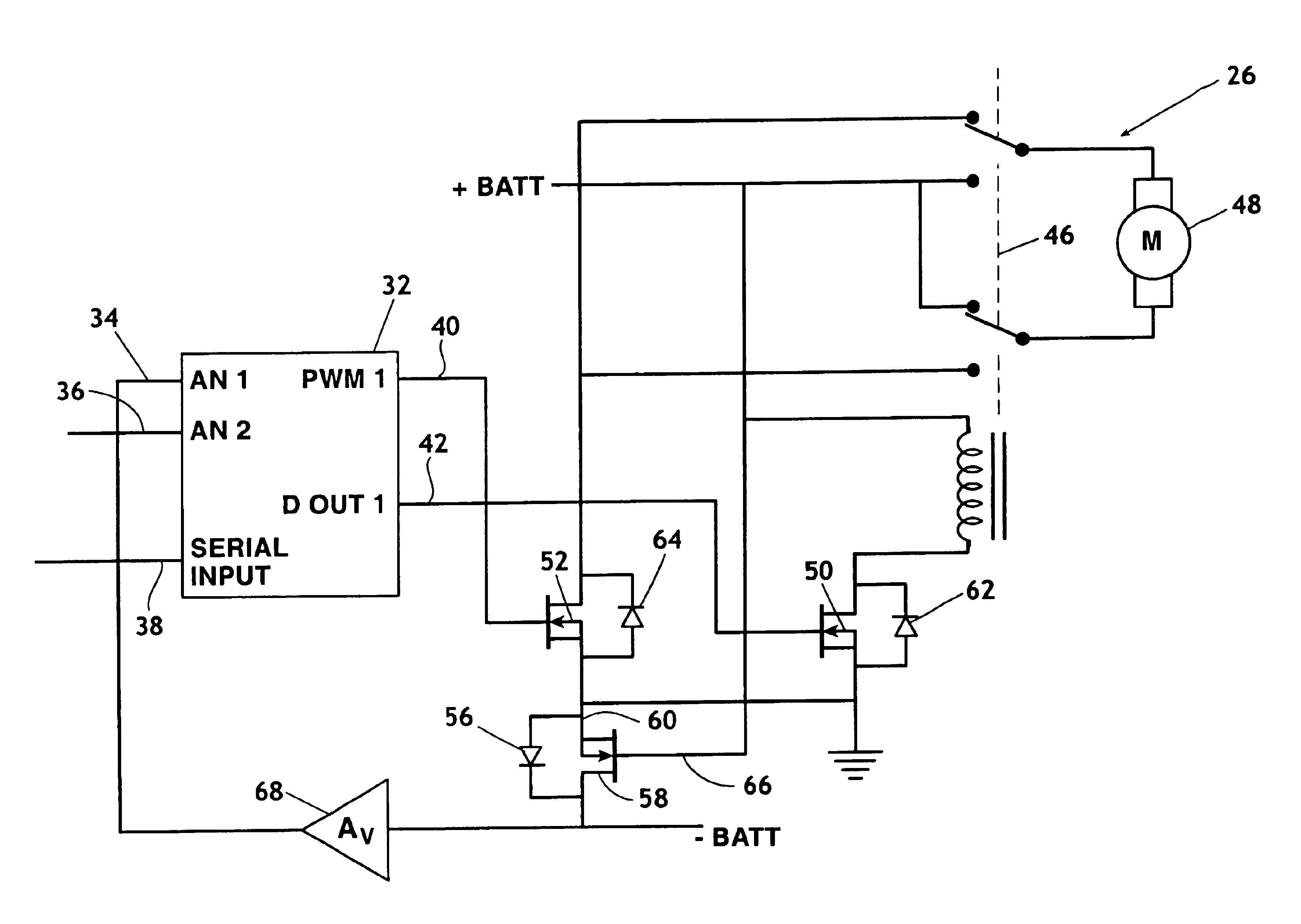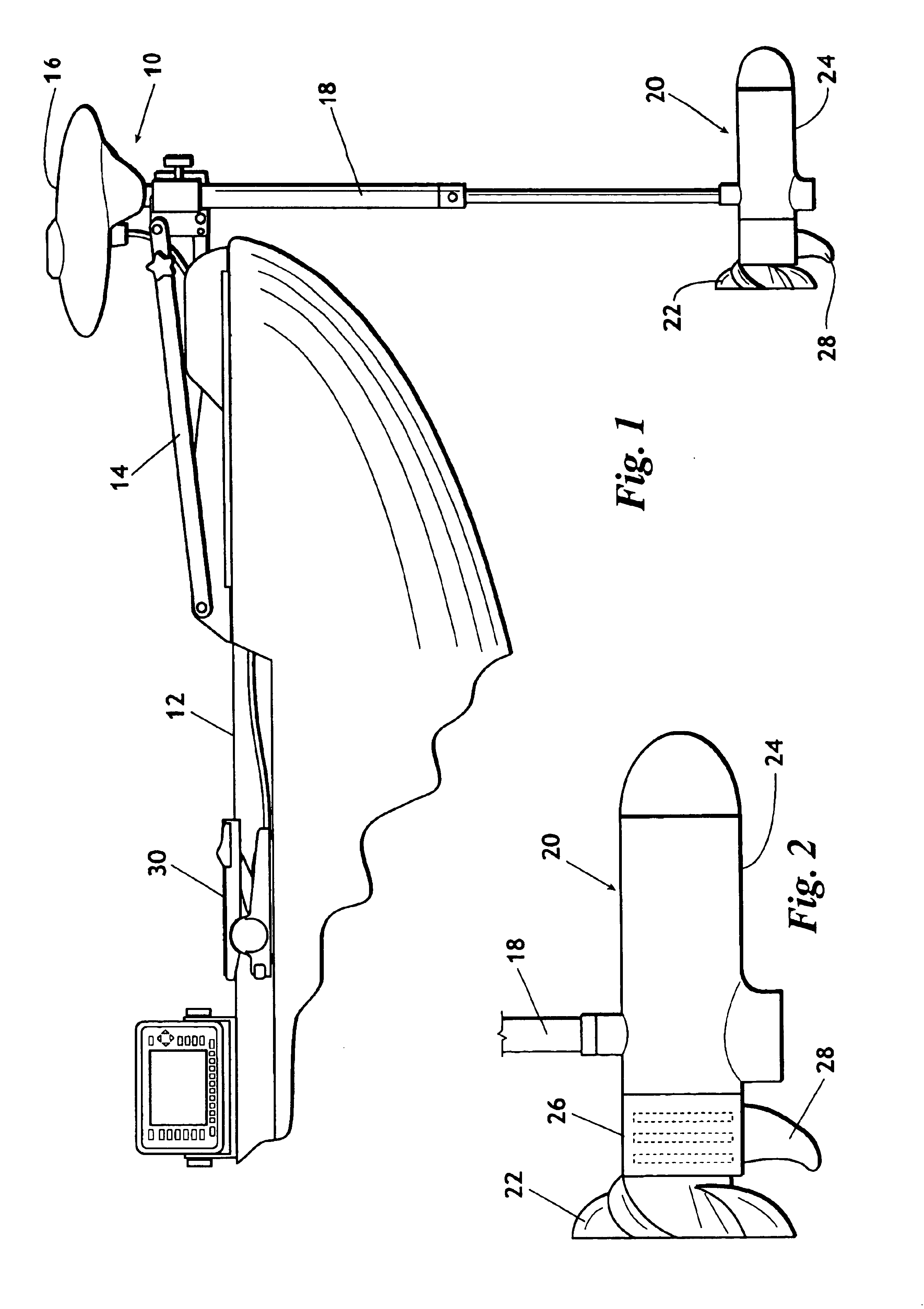Reverse battery protection for a trolling motor
a technology for trolling motors and batteries, which is applied in the direction of safety/protection circuits, emergency protection arrangements for automatic disconnection, field or armature current control, etc. it can solve the problems of unanticipated activation, easy to reverse the connection of such clips with respect to the polarity of the battery, and catastrophic failure of the electronic circuitry controlling the motor and steering system. , to achieve the effect of low loss, high impedance and low impedan
- Summary
- Abstract
- Description
- Claims
- Application Information
AI Technical Summary
Benefits of technology
Problems solved by technology
Method used
Image
Examples
Embodiment Construction
[0024]Before explaining the present invention in detail, it is important to understand that the invention is not limited in its application to the details of the construction illustrated and the steps described herein. The invention is capable of other embodiments and of being practiced or carried out in a variety of ways. It is to be understood that the phraseology and terminology employed herein is for the purpose of description and not of limitation.
[0025]Referring now to the drawings, wherein like reference numerals indicate the same parts throughout the several views, a trolling motor 10 having reverse battery protection is shown in its general environment in FIG. 1. Typically trolling motor 10 is rotatably mounted to a fishing boat 12 by a mount 14. Mount 14 allows the trolling motor to be placed in the water, as shown in FIG. 1, or to be laid on the deck of boat 12 when not in use. Preferably, trolling motor 10 includes: head 16 which typically houses a steering mechanism and...
PUM
 Login to View More
Login to View More Abstract
Description
Claims
Application Information
 Login to View More
Login to View More - R&D
- Intellectual Property
- Life Sciences
- Materials
- Tech Scout
- Unparalleled Data Quality
- Higher Quality Content
- 60% Fewer Hallucinations
Browse by: Latest US Patents, China's latest patents, Technical Efficacy Thesaurus, Application Domain, Technology Topic, Popular Technical Reports.
© 2025 PatSnap. All rights reserved.Legal|Privacy policy|Modern Slavery Act Transparency Statement|Sitemap|About US| Contact US: help@patsnap.com



